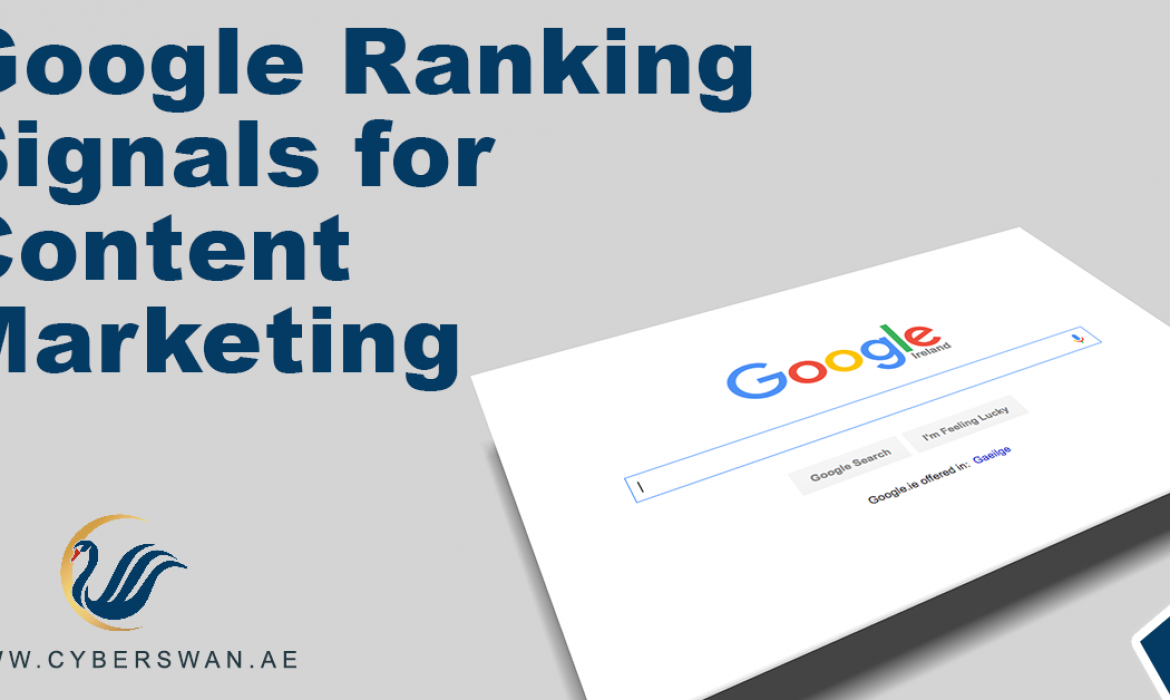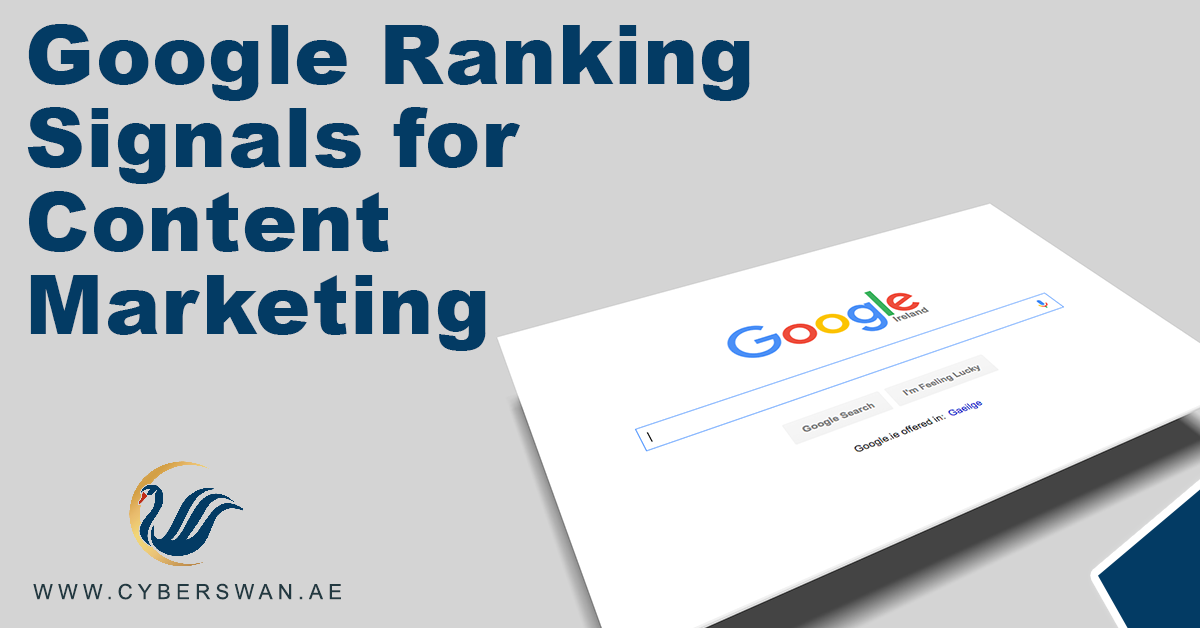
Google Ranking Signals for Content Marketing

Content serves as the key to success when it comes to search engine optimization. The technical SEO exists and plays a teeny-tiny factor. But Google has stressed it again for publishing the site with high-quality and useful content.
What has perceived as a sign of high-quality content in Google?
The five content-related ranking signals of Google determines which article to appear at the top of Google as mentioned below:
Linkable content
The google’s oldest ranking signal is the backlink profile. Since the Google has launched, the backlinks served at the core of its ranking algorithm.
Ever since Google has repeatedly added dozens and even hundreds of other signals. But the backlinks has remained the most powerful one. It can be used as a very simpler ones, the more better it serves.
The website owners had figured out that the Google’s search result pages had been heavily manipulated. It seems to be very complicated now, to the point that whether a single person is working for Google to completely understand how it works.
There has been high- authority and low authority links, good and bad links also natural and unnatural links. Generally, one group balancing the other.
Few links would drag you down, while others drive you up. It remains unpredictable. This makes a clear sense that many editorial and natural links are required. In simpler terms, we need to generate a linkable content. Here comes the role of the content creator who plays a vital role, to create content that attracts valuable links.
What do you mean by a linkable content?
There comes no single definition when it comes to a linkable content, because there is no single type of link. Generally, the educational content attracts links from teachers, innovative content get links from niche journalists and bizarre content drives links from popular media outlets and discussion boards.
Check out Buzzsumo, while working on an article for getting an idea on which content attracts more links for your topic. This filter results to view recently published content as well to evaluate the current linkable trends.
Stay relevant
Certain years ago, the specific keywords were added several times in an article or they may be added on a page that served enough for Google to consider that content was relevant to the matching search query. Similar to the keyword stuffing to rank higher on the google.
This leaded to a very easily-manipulated signal, therefore Google has been working hard on improvising its relevant signals.
Here comes no single signal, whereas backlinks renders to a group of signals. As copywriters, we do have control while we create the content.
There comes the biggest improvement of Google’s relevancy algorithms done by implementing the introduction of semantic mapping. It renders Google to understand each query in context than matching the exact sequence of words to the indexed documents.
With the help of Semantic research, publishers can create relevant content, better-researched to the similar ways helping the Google algorithmically calculate its relevance.
The text optimizer tool helps you to create a more relevant context to match Google’s and its users expectations. It also scores your content relevancy and points towards the possible areas of improvement.
Other improvements are initiated to Google’s relevancy algorithms that are not easy to practise but are good to include such as:
- Google BERT update
- Google Hummingbird update
Length of the content
There has been loads of debates as well arguments in the SEO niche with regards to the contents length. But Google favours a long-form content.
It is stated that long-form content generates more backlinks and tends to rank higher.
Either it may be a direct ranking signal or a simple way to create more linkable content, the long-form content goes a long way.
As a rule of thumb, you have to use the editorial judgement:
- If you get an option of writing an 1000 word article or three 200 word articles, ensure to choose the longer option.
- If your article turns into a 5000-word book, consider breaking into a series by making into specific angles and subtopics.
If you had fully covered a target question in your 500 word article, that mostly happens while addressing narrow queries or specific topics. The useful article that answers a query serves better than a long-form content which has solely written for a word count.
Exact Match of Keywords
Google has crossed beyond the exact-match of keywords and understands relevancy beyond word strings, that may include your target keyword which remains important.
One study founded that “ the wide numbers of title tags in Google exactly or partially match the keyword they rank for”. Most titles did not have exact-match of keywords but some variations in those.
This makes us aware that Google is still looking at keywords, hence keyword research and optimization is yet important.
Engage with the Content
Google never confirms that they use on-page engagement as a direct ranking factor. The thing is, users leave right away if they find the content was useless. This adheres the “bounce rate” and “time on page” metrics questionable signals of content quality.
Google uses some user engagement metrics as a ranking single, but these signals are differently evaluated from SERPs to SERPs, never having the absolute metrics. They are compared for top-ranking sites, allowing Google to identify quickly the possible anomalies.



